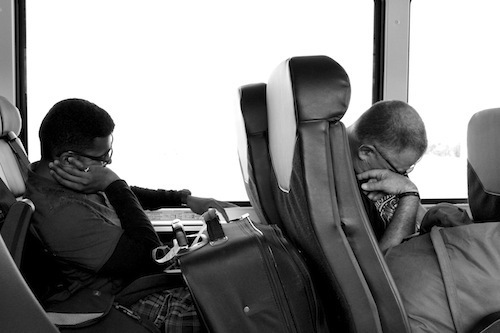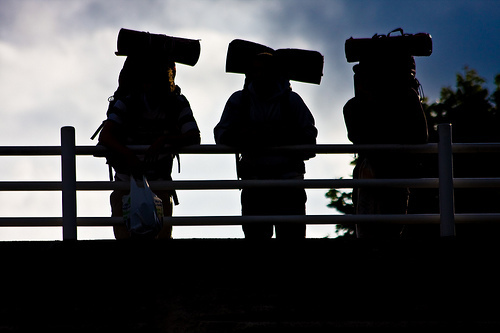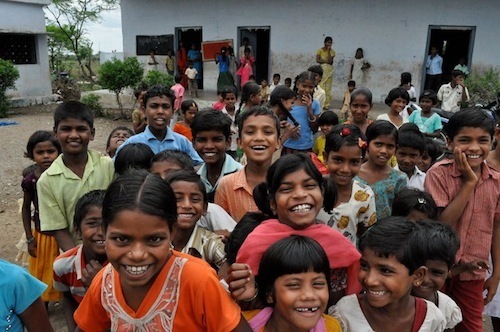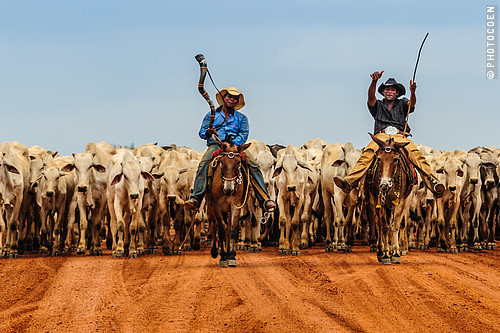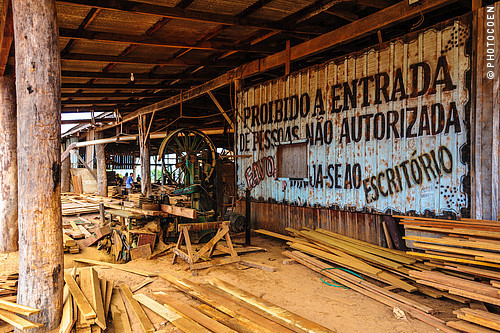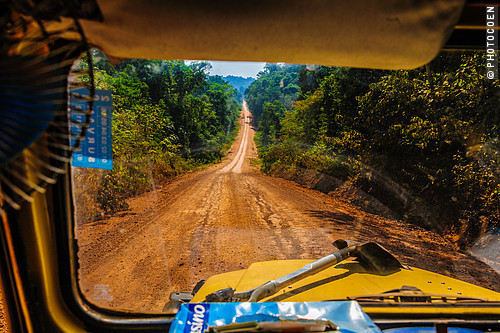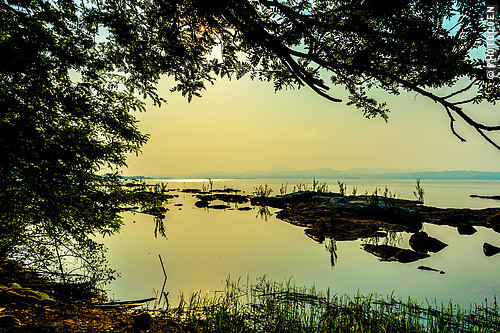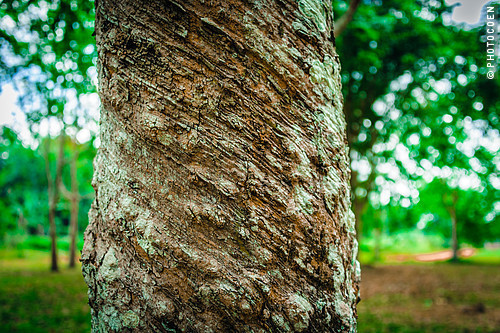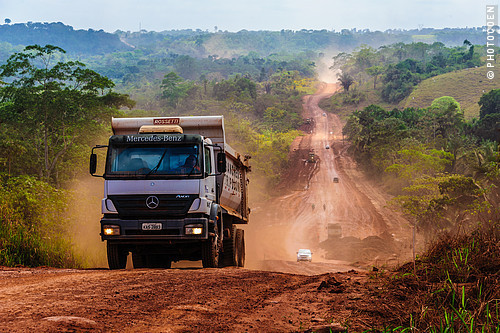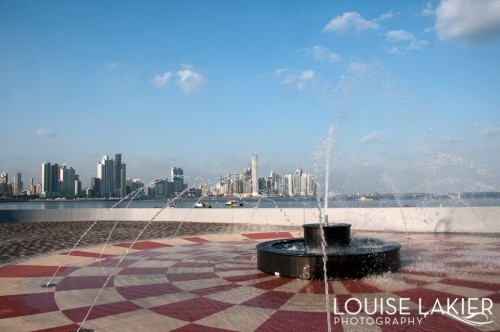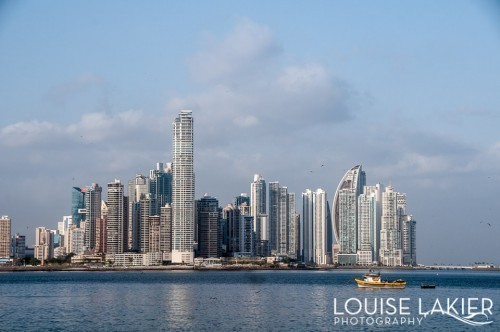Rolf Potts's Blog, page 41
May 5, 2014
Vagabonding book club: Chapter 5: Don’t set limits
Vagablogging :: Rolf Potts Vagabonding Blog
“If there’s one key concept to remember amid the excitement of your first days on the road, it’s this: Slow down.
Just to underscore the importance of this concept, I’ll state it again: SLOW . . . DOWN.
For first time vagabonders, this can be one of the hardest travel lessons to grasp, since it will seem that there are so many amazing sights and experiences to squeeze in. You must keep in mind, however, that the whole point of long term travel is having the time to move deliberately through the world. Vagabonding is about not merely reallotting a portion of your life for travel but rediscovering the entire concept of time.”
Rolf Potts, Chapter 5, Vagabonding: An Uncommon Guide to the Art of Long-Term World Travel
As I re-read this passage I couldn’t help but nod along and smile a little. Just this morning I spent an hour on the phone with some folks preparing to set off for a year of travel with their kids. Their enthusiasm was contagious, the joy in their voices as they peppered me with questions was palpable. It’s always exciting to chat through big plans with intrepid souls and imagine the endless possibilities.
“So what do you think of our planned route,” Sterling asked me, after he’d rattled off their rough outline.
“Well, I think it sounds fantastic!” I replied, “I don’t disagree on any particular point, your choices are all excellent, but I do think you’re going to get tired. If you’ve only got a year then I understand the desire to see as much as possible, but there’s also something to be said for slowing down and leaving room for serendipity.”
To SLOW DOWN was the first big lesson that the road taught us. It’s the number one thing I’d say to myself if I could go back and start over. It’s the first recommendation I have for new travelers. Slow down. Over planning limits your travels in your own mind, if not in reality. Becoming married to your plan and your self imposed itinerary makes it hard to release the reins and just live in the moment you’re given.
Eventually one learns to become comfortable flying by the seat of her pants. Pre arranging all of the flights for a four country tour becomes unnecessary, even undesirable. Booking hotels ahead becomes laughable. We learn to greet each new day on the road with an open hand and to savour the delight of watching it unfold, not knowing, for certain where we are going or where we’ll rest our heads at night.
It’s hard at first. If you need that structure to begin with, then don’t be afraid, or ashamed to have it. It is better to get out there and do something than to be paralyzed by fears and do nothing. Give yourself permission to change your plans if it seems right and commit to yourself that you’ll take each day slowly, move deliberately, as Rolf says, and experience your time on the road moment by moment instead of a neatly printed on your itinerary.
The essence of Vagabonding is found in this chapter, in not setting limits, on yourself, on others, on the world, on your journey itself.
Original article can be found here: Vagabonding book club: Chapter 5: Don’t set limits
May 4, 2014
Freya Stark on the need for solitude
Vagablogging :: Rolf Potts Vagabonding Blog
“Modern education ignores the need for solitude: hence a decline in religion, in poetry, in all the deeper affections of the spirit: a disease to be doing something always, as if one could never sit quietly and let the puppet show unroll itself before one: an inability to lose oneself in mystery and wonder while, like a wave lifting up into new seas, the history of the world develops around us.”
–Freya Stark, The Valleys of the Assassins (1934)
(1934)
Original article can be found here: Freya Stark on the need for solitude
May 3, 2014
Greyhound across America: Photos from a month on the bus by Kristina Perkins
Vagablogging :: Rolf Potts Vagabonding Blog
Starting from Minneapolis, Minnesota, I spent 30 days exploring the United States (traveling to 37 states) and documenting the faces and places I saw on the Greyhound Bus system with photographs and short stories. I showered rarely, slept infrequently, ate poorly, and I loved every uncomfortable minute of it.
My fascination with the culture of the Greyhound started in college when I would take the bus to Montana to visit a dear friend. As I discerned my creative inspiration to street photography, I felt a pull to quit my awful job, forget about my recent heartbreak and get on the road. Why wait?!
While exploring in the few moments I had off of the bus, I wanted to learn about each city’s preferred method of travel. Was it bus? Subway? Bicycle? On foot? Why were people commuting the way they were? As you can imagine, the answers varied based on financial and geographical limitations.
I took over 4000 digital and film photographs using four different cameras: Canon DSLR, Holga, Fish Eye and iPhone. My trip was funded solely by the Minneapolis community with individual donations. The gallery exhibit profiling my journey was funded by a FEAST MPLS grant I won in November 2010. My self published book, Falling Asleep Behind the Lens, documenting my journey is available on my website: KPCreates.com
Follow Kristina on Instagram or through her website
Original article can be found here: Greyhound across America: Photos from a month on the bus by Kristina Perkins
May 2, 2014
5 Travel lessons you can use at home
Vagablogging :: Rolf Potts Vagabonding Blog
Travel has a way of slowing you down, of waking you up, of pulling you up out of your daily routines and seeing life in a new way. This new way of looking at the world need not end when you resume your life at home.
Here are 5 key ways in which the lessons you learn on the road can be used to enrich the life you lead when you return home…
1) Time = Wealth
By far the most important lesson travel teaches you is that your time is all you really own in life. And the more you travel, the more you realize that your most extravagant possessions can’t match the satisfaction you get from finding new experiences, meeting new people, and learning new things about yourself. “Value” is a word we often hear in day-to-day life, but travel has a way of teaching us that value is not pegged to a cash amount, that the best experiences in life can be had for the price of showing up (be it to a festival in Rajasthan, a village in the Italian countryside, or a sunrise ten minutes from your home).
Scientific studies have shown that new experiences (and the memories they produce) are more likely to produce long-term happiness than new things. Since new experiences aren’t exclusive to travel, consider ways to become time-rich at home. Spend less time working on things you don’t enjoy and buying things you don’t need; spend more time embracing the kinds of activities (learning new skills, meeting new people, spending time with friends and family) that make you feel alive and part of the world.
2) Be Where You Are
A great thing about travel is that it forces you into the moment. When you’re celebrating carnival in Rio, riding a horse on the Mongolian steppe, or exploring a souk in Damascus, there’s a giddy thrill in being exactly where you are and allowing things to happen. In an age when electronic communications enable us to be permanently connected to (and distracted by) the virtual world, there’s a narcotic thrill in throwing yourself into a single place, a single moment. Would you want to check your bank-account statement while exploring Machu Picchu in Peru? Are you going to interrupt an experience of the Russian White Nights in St. Petersburg to check your Facebook feed? Of course not — when you travel, you get to embrace the privilege of witnessing life as it happens before your eyes. This attitude need not be confined to travel.
At home, how often do you really need to check your email or your Twitter feed? When you get online, are you there for a reason, or are you simply killing time? For all the pleasures and entertainments of the virtual-electronic world, there is no substitute for real-life conversation and connection, for getting ideas and entertainment from the people and places around you. Even at home, there are sublime rewards to be had for unplugging from online distractions and embracing the world before your eyes.
3) Slow Down
One of the advantages of long-term travel (as opposed to a short vacation) is that it allows you to slow down and let things happen. Freed from tight itineraries, you begin to see the kinds of things (and meet the kinds of people) that most tourists overlook in their haste to tick attractions off a list. A host of multi-million-dollar enterprises have been created to cater to our concept of “leisure,” both at home and on the road — but all too often this definition of leisure is as rushed and rigidly confined as our work life. Which is more emblematic of leisure — a three-hour spa session in an Ubud hotel, or the freedom to wander Bali at will for a month?
All too often, life at home is predicated on an irrational compulsion for speed — we rush to work, we rush through meals, we “multi-task” when we’re hanging out with friends. This might make our lives feel more streamlined in a certain abstracted sense, but it doesn’t make our lives happier or more fulfilling. Unless you learn to pace and savor your daily experiences (even your work-commutes and your noontime meals) you’ll cheating your days out of small moments of leisure, discovery and joy.
4) Keep it Simple
Travel naturally lends itself to simplicity, since it forces you to reduce your day-to-day possessions to a few select items that fit in your suitcase or backpack. Moreover, since it’s difficult to accumulate new things as you travel, you to tend to accumulate new experiences and friendships instead — and these affect your life in ways mere “things” cannot.
At home, abiding by the principles of simplicity can help you live in a more deliberate and time-rich way. How much of what you own really improves the quality of your life? Are you buying new things out of necessity or compulsion? Do the things you own enable you to live more vividly, or do they merely clutter up your life? Again,researchers have determined that new experiences satisfy our higher-order needs in a way that new possessions cannot — that taking a friend to dinner, for example, brings more lasting happiness than spending that money on a new shirt. In this way, investing less in new objects and more in new activities can make your home-life happier. This less materialistic state of mind will also help you save money for your next journey.
5) Don’t Set Limits
Travel has a way revealing that much of what you’ve heard about the world is wrong. Your family or friends will tell you that traveling to Colombia or Lebanon is a death-wish — and then you’ll go to those places and have your mind blown by friendliness, beauty and new ways of looking at human interaction. Even on a day-to-day level, travel enables you to avoid setting limits on what you can and can’t do. On the road, you naturally “play games” with your day: watching, waiting, listening; allowing things to happen. There’s no better opportunity to break old habits, face latent fears, and test out repressed facets of your personality.
That said, there’s no reason why you should confine that sort of freedom to life on the road. The same Fear-Industrial Complex that spooks people out of traveling can discourage you from trying new things or meeting new people in own your hometown. Overcoming your fears and escaping your dull routines can deepen your home-life — and the open-to-anything confidence that accompanies travel can be utilized to test new concepts in a business setting, rejuvenate relationships with friends and family, or simply ask that woman with the nice smile if she wants to go out for coffee. In refusing to set limits for what is possible on a given day, you open yourself up to an entire new world of possibility.
Naturally, this list is just a sampling of how travel can transform your non-travel life. What have I missed? What has travel taught you about how to live life at home?
This post is part of a guest post Rolf wrote for Tim Ferris’ blog in February 2010. You can view the whole piece here.
Original article can be found here: 5 Travel lessons you can use at home
Vagabonding Case Study: Dylan Drake
Vagablogging :: Rolf Potts Vagabonding Blog
Dylan Drake
Age: 37
Hometown: Missoula, Montana
Quote: “Don’t be afraid – it’s only the unknown that is scary.”
How did you find out about Vagabonding, and how did you find it useful before and during the trip?
I found out about it from other travel bloggers on Facebook. I don’t have a lot of time to read at the moment as we are caring for two young toddlers while traveling. But I’m hoping to read the book soon!
How long were you on the road?
My husband and 2 little ones have been on the road for 8 months and counting!
Where did you go?
Argentina, Chile, Paraguay, Brazil, Bolivia, Peru, Ecuador, Colombia, and heading north!
What was your job or source of travel funding for this journey?
I am a graphic designer working for clients back in the US, my husband is a photographer and has done some work along the way. We also have some property in Buenos Aires and Montana that is rented.
Did you work or volunteer on the road?
We plan to volunteer once we get to Nicaragua; we work remotely on the road.
Of all the places you visited, which was your favorite?
That is a tough one! I loved Chile, but we were there in the winter so we didn’t stay and explore as much as I would have liked. Peru was amazing for the history, we could have spent months there learning about and visiting the amazing amount of ruins. But I think Ecuador is my top so far – great climate, great infrastructure, friendly people, small enough to explore it all but so many diverse areas. Beautiful coast, mountains, cloud forest, jungle, volcanoes, lakes, indigenous peoples… we really fell in love!
Was there a place that was your least favorite, or most disappointing, or most challenging?
Bolivia was very challenging. It is a very poor country and the people live with so little. I felt a lot of empathy for the living conditions of the locals. It was very challenging navigating the country and the roads were pretty terrible.
Which travel gear proved most useful? Least useful?
We aren’t gear-heads and we started our trip with very little resources so we just brought what we had. Every day we use our little electrical hot-plate in the hotels or hostels, our French press, a Swiss army knife, a bucket for washing dishes/clothes, a peeler for peeling carrots, etc for the kids, our tent and sleeping bags and sleeping pads, a rechargeable flashlight, and our GPS of course! Least useful: Our satellite phone – even though my husband says he’s glad we have it. We have never used it once and it was very expensive!
What are the rewards of the vagabonding lifestyle?
We have grown as a family together as we explore, have fun, and face challenges each day. We take the best from each culture that we learn about and integrate it into our new reality, so in that new possibilities are always opening up to us and we know there is no “right” way to be or live. The more we learn and the more amazing people we meet, the more we understand what really matters in this life, and it’s not our possessions, social climbing, or getting promoted in our jobs. It’s people, experiences, and living… really living! Because we only have this one life.
What are the challenges and sacrifices of the vagabonding lifestyle?
As a mom, I’m sacrificing having a safe and secure “nest” for our family. My children are sacrificing going to swimming and dance lessons and having regular friends. My husband is sacrificing his career to a certain extent because he put it on hold to travel, though we are hoping for a career change if/when we settle down again.
What lessons did you learn on the road?
Take as little as possible. Your possessions are a hindrance, so only bring what you really need! Also, when taking advice from others on where we should go, always pay attention to the source. People often try to scare us about places that may not be dangerous, or tell us about a great hike that is completely unsuitable for little legs.
How did your personal definition of “vagabonding” develop over the course of the trip?
In the beginning we were not true vagabonds; we had a set time frame for an arrival and a general course we wanted to follow. We started very driven, but in fact were missing many amazing things because we weren’t open. Now our path is more like little circles as we tend to follow our hearts a bit more in choosing our next destination, which is ending up being a bit more consistent with nomadic behavior!
If there was one thing you could have told yourself before the trip, what would it be?
Don’t be afraid – it’s only the unknown that is scary. The world is so full – overflowingly full of life and so ready for you to set out on your path of discovery, and through this discovery you will be forever changed!
Any advice or tips for someone hoping to embark on a similar adventure? When and where do you think you’ll take your next long-term journey?
Don’t be so concerned with the preparations. Just go, and bring as little as possible! What you forget you can find along the way, but bringing something you don’t need will cause you stress as you try to decide if you should part with it or not. Our next long-term journey (once we arrive in the US) will be to return back to Argentina, possibly with electric bicycles! TBD!
Website: camperclan.com
Are you a Vagabonding reader planning, in the middle of, or returning from a journey? Would you like your travel blog or website to be featured on Vagabonding Case Studies? If so, drop us a line at casestudies@vagabonding.net and tell us a little about yourself.
Original article can be found here: Vagabonding Case Study: Dylan Drake
April 30, 2014
Talking to strangers also keeps us safe
Vagablogging :: Rolf Potts Vagabonding Blog
“Don’t talk to strangers!”
Possibly the worst advice I have ever gotten.
It’s a phrase most kids hear repeatedly from the moment they start to take their first steps into the world. Adults repeat these four words to kids like a mantra, hoping to keep the potential danger of a predator at bay. It is also one of many phrases we repeat to our kids that makes absolutely no sense in adulthood, especially once you start traveling. In fact, the more I travel, the more I realize just how bogus this tidbit of advice really is.
Every time I hear these words repeated, I cringe. Not only is “never talking to strangers” ridiculous, these four words are based in a deeply held fear that every person is a potential predator. Worse, it’s a phrase that communicates the notion that the only way for a person to stay “safe” is for them to stay disconnected from their fellow human beings. “Don’t talk to strangers” is just one of the ways we communicate the cultural belief that there is an “us” and there is a “them” and they are different… and a little bit scary.
How many times a day do you, as an adult, talk to strangers? How many times in your travels have you had to rely on the wisdom, kindness, or guidance of strangers? How many amazing experiences have you had that you can attribute to a chance connection with a stranger? How many times in your life have you gotten into trouble and needed to go to a stranger for help? Why would we deny these same things to our children?
Now think about how many times you have met a stranger on your travels and automatically recoiled, the often repeated warning bubbling up in your mind. Was that your gut talking or your conditioning? Has the advice “don’t talk to strangers” really served you? If it hasn’t, why keep passing along bad information to our youngest generation?
We are robbing our children and our future travelers of something very important every time we tell them “don’t talk to strangers”- their ability to trust themselves and connect authentically with their fellow human beings. Talking to strangers is one of the best things we can teach our children to do- and it is imperative if we expect them to ever venture out into the world on journeys of their own. Strangers know things we don’t know. Always. They can help, explain, give directions, and offer support. Strangers are a reflection of ourselves in innumerable ways and they offer glimpses at those invisible threads that bind all of humanity. They offer glimpses into worlds we never knew about and embody wisdom that can only be shared through trusting connection. Talking to strangers keeps us grounded and connected.
Talking to strangers also keeps us safe.
You heard me right, it keeps us safe. You know who I would run to in an emergency while traveling alone in India? A stranger. You know who I watch and listen to to figure out cultural norms in a new location? Strangers. You know who continually boosts my faith in humanity and reminds me that I am not alone, no matter where I am on this journey? Strangers. A whole bunch of wonderful strangers. One of the most important things travel has taught me is that every “stranger” is just a friend you don’t know yet.
Why, why, why then would we ever tell anyone not to talk to strangers?
Young people trust us. They look to adults for guidance, for better or worse. So, do we want to send them out to explore the far corners of our earth on their 18th birthday, holding onto a deep seeded belief that strangers are scary? Or do we want to encourage h them to trust their guts, talk to strangers, have some faith in humanity, and make connections any time, any where they feel comfortable doing so?
I know which one I pick.
Besides, one of the biggest lessons travel has taught me is that every “stranger” is just a friend you don’t know yet.
Original article can be found here: Talking to strangers also keeps us safe
“Don’t talk to strangers!”
Vagablogging :: Rolf Potts Vagabonding Blog
“Don’t talk to strangers!”
Possibly the worst advice I have ever gotten.
It’s a phrase most kids hear repeatedly from the moment they start to take their first steps into the world. Adults repeat these four words to kids like a mantra, hoping to keep the potential danger of a predator at bay. It is also one of many phrases we repeat to our kids that makes absolutely no sense in adulthood, especially once you start traveling. In fact, the more I travel, the more I realize just how bogus this tidbit of advice really is.
Every time I hear these words repeated, I cringe. Not only is “never talking to strangers” ridiculous, these four words are based in a deeply held fear that every person is a potential predator. Worse, it’s a phrase that communicates the notion that the only way for a person to stay “safe” is for them to stay disconnected from their fellow human beings. “Don’t talk to strangers” is just one of the ways we communicate the cultural belief that there is an “us” and there is a “them” and they are different… and a little bit scary.
How many times a day do you, as an adult, talk to strangers? How many times in your travels have you had to rely on the wisdom, kindness, or guidance of strangers? How many amazing experiences have you had that you can attribute to a chance connection with a stranger? How many times in your life have you gotten into trouble and needed to go to a stranger for help? Why would we deny these same things to our children?
Now think about how many times you have met a stranger on your travels and automatically recoiled, the often repeated warning bubbling up in your mind. Was that your gut talking or your conditioning? Has the advice “don’t talk to strangers” really served you? If it hasn’t, why keep passing along bad information to our youngest generation?
We are robbing our children and our future travelers of something very important every time we tell them “don’t talk to strangers”- their ability to trust themselves and connect authentically with their fellow human beings. Talking to strangers is one of the best things we can teach our children to do- and it is imperative if we expect them to ever venture out into the world on journeys of their own. Strangers know things we don’t know. Always. They can help, explain, give directions, and offer support. Strangers are a reflection of ourselves in innumerable ways and they offer glimpses at those invisible threads that bind all of humanity. They offer glimpses into worlds we never knew about and embody wisdom that can only be shared through trusting connection. Talking to strangers keeps us grounded and connected.
Talking to strangers also keeps us safe.
You heard me right, it keeps us safe. You know who I would run to in an emergency while traveling alone in India? A stranger. You know who I watch and listen to to figure out cultural norms in a new location? Strangers. You know who continually boosts my faith in humanity and reminds me that I am not alone, no matter where I am on this journey? Strangers. A whole bunch of wonderful strangers. One of the most important things travel has taught me is that every “stranger” is just a friend you don’t know yet.
Why, why, why then would we ever tell anyone not to talk to strangers?
Young people trust us. They look to adults for guidance, for better or worse. So, do we want to send them out to explore the far corners of our earth on their 18th birthday, holding onto a deep seeded belief that strangers are scary? Or do we want to encourage h them to trust their guts, talk to strangers, have some faith in humanity, and make connections any time, any where they feel comfortable doing so?
I know which one I pick.
Besides, one of the biggest lessons travel has taught me is that every “stranger” is just a friend you don’t know yet.
Original article can be found here: “Don’t talk to strangers!”
April 29, 2014
Road tripping Brazil: Traveling down the Transamazônica
Vagablogging :: Rolf Potts Vagabonding Blog
I had looked out over Rio de Janeiro standing next to the statue of Cristo Redentor, I had snorkeled, kitesurfed and strolled the palm-lined beaches of northeast Brazil, ambled through colonial towns like Salvador da Bahia and admired modern architecture in Brasília. These places and activities were all highlights of Brazil and I felt I had seen quite a bit of the country. However, when I looked on the map, I realized there was a vastness I hadn’t explored at all, part of it being the Amazon.
Explore the Amazon
There are different ways of exploring the Amazon, for example by taking a boat from Belém to Manaus over the Amazon River or visiting some indigenous communities around Manaus.
There is a third way: driving down the Transamazônica. Since my partner and I are traveling in an antique Land Cruiser, that option easily won out over taking a boat. Having said that, you don’t need a car of your own to drive down this 2,500 miles east-west road that connects the Atlantic Ocean with an insignificant town called Lábrea (southwest of Manaus). You can rent a car in any of the bigger cities, or simply take the bus. Along the road you will find basic places to eat and sleep, but note that distances are long, so make sure you bring enough drinking water and snacks.
The Transamazônica was one of the first roads built to open up the Amazon to the rest Brazil, in the 1970s. It is still largely unpaved, although asphalting is underway between Santarém and the infamous Belo Monte Dam project. Go in the dry season (July – Oct), which may be incredibly dusty, but which is preferable to traveling here in the rainy season when red dust transforms into slick mud and stretches may become impassible.
In this article I will focus on the 625-mile stretch from Lábrea to Santarém, which took us 5 days to drive. A warning: this is not the place to see endless untouched rainforest – most of it has been cut for Brazil’s booming business of cattle ranching. The upside: stumbling upon a cattle drive with a handful of cowboys driving 1,000 – 1,5000 cows for weeks or months on end from a cattle ranch to a slaughterhouse, which is quite a sight.
Sawmills
As deforestation continues, you will find sawmills along the way. We stopped near the Floresta Nacional Humaitá and asked permission to visit one of mills, which was no problem. Workers were happy to explain what they were doing, how much they were producing and to demonstrate their machinery. The visit will give you an impression of the scale of Brazil’s (hard)wood industry. A lot of deforestation is legal, part of it is not – the latter is visible in e.g. trucks driving without license plates.
Indigenous Communities
The Transamazônica passes Indigenous Territories, like T.I. Nove de Janeiro and T.I. Tenharim Marmelos. Here you will be stopped to either be asked for a fee or to take a look at their handicrafts. Although we didn’t do so on this particular stretch, you could ask for permission to see their village and maybe stay there. Our experience elsewhere in Brazil is that if you are prepared to spend some money, indigenous people generally are happy to receive you.
Please take note of what you buy: birds and other species are killed to make some of the handicrafts and apart from the fact that you (hopefully) don’t want to contribute to that kind of business, realize that when it concerns handicrafts made of endangered species, you can’t bring the stuff into your own country anyway.
National Park da Amazônia
The Transamazônica traverses the Amazon National Park, which is one of the most beautiful stretches on the route. It consists of dryland forest and is a good place for birdwatching enthusiasts as there are close to 400 bird species in the park. Other animals you may spot are black jaguars, pumas, and tapirs. There are two rustic lodgings and a couple of trails. You may have to register first at the IBAMA office in Itaituba, which is a good place to find reliable guides.
The Museum of Ford Motor Company – Fordlãndia and Belterra
In Belterra, Henry Ford laid out his rubber plantations to safeguard an unlimited supply of rubber for the Ford Motor Company’s tires. He planted a total of 1,5 million rubber trees in Fordlândia, his first project, alone. This, as well as a second project, failed for different reasons. You will see former residences, still inhabited today, and some of the company offices. There is a terrain with rubber trees and a small museum with photos and memorabilia. Ask for a guide to show you around and tell you the history of this place; it’s fascinating.
Alter do Chão – a River Bath or A Festa do Sairé
After so many kilometers of dust, you are ready for a bath! Although officially the stretch from Rurópolis to Santarém and Alter do Chão is not part of the Transamazônica, these towns are logical places to end your journey and relax for couple of days. Alter do Chão is a laid-back town situated along the Tapajós River with white sand beaches. This is thé place to soak off that dust and to enjoy a couple of caipirinhas (cocktails based on sugar cane liquor, sugar and lemon).
If you happen to be here in September: A Festa do Sairé takes place around the 15th, which is one of the best events in Brazil with all night long dancing and a music spectacle downtown.
It may be a pain to get to the Transamazônica and it most definitely isn’t a journey for comfort and luxury seekers, but this is one of Brazil’s off the beaten tracks well worth exploring. Have fun!
bio: Karin-Marijke Vis and her partner Coen Wubbels, photographer, have been overlanding in Asia and South America since 2003, and have been awarded the Overlanders of the Year Award 2013. They work as a freelance duo. Their work has been published in 4WD/car monthlies as well as in travel magazines. Follow them on landcruisingadventure.com, notesonslowtravel.com and instagram/photocoen
Original article can be found here: Road tripping Brazil: Traveling down the Transamazônica
April 28, 2014
The Cinta Costera III: Casco Viejo, Panama
Vagablogging :: Rolf Potts Vagabonding Blog
Is not the most walkable city but there are newer pieces and parts planned in pedestrian friendly style.
The Casco Viejo is a city of contrasts, a city under restoration intertwined with a city crumbling down. When I arrived there unexpectedly for a week’s stay I was surprised at the intensity of traffic passing through the narrow streets.
Walking through the Casco Viejo and along the waters edge of the Cinta Costera I (II?), I watched the construction progressing on an elevated road above the bay. A u-shaped causeway was taking shape. Heavy machinery and work crews stood silhouetted against the skyline. Looking down at the old city from atop of Cerro Ancon, a hill looming above the town, the shape was reminiscent of ancient fortress walls.
I tried to see past the guards stationed in front of the entry to the roadway and between the barriers. Where would this ring road lead you? Then one morning in my hostel lobby, an announcement on the news reached my ears, the opening celebrations of the Cinta Costera was happening this evening.
There were fireworks over the Casco Viejo that night. Fireworks with rainbow LED lighting streaking around the historic port, emphasizing the route and adding another level of pizzazz to the display. Since noticing the ring road, I hoped I could run the length of it and discover the destination on foot.
The next evening, the traffic in town was noticeably less and out there in the bay, I could see cars and trucks zipping along freely. I checked in with my fellow walkers/runners/skaters and confirmed, the pedestrian walkway took you all the way round. I walked it, I ran it, I watched skaters and cyclists ride it, I dodged groups of pedestrians strolling with their dogs. I looked back at the magnificent views of the Casco Viejo, views now seen by fishermen and through history by ships returning from the open sea. I reached the other side on the opposite edge of the Casco, my diversion completed.
I learned from talking to locals, this construction project was not appreciated. Unimpeded views to the horizon were now marred by a busy roadway. Now, with this barrier, the Casco was no longer truly a port city. It’s UNESCO World Heritage status was questioned and then left intact. To the locals, the Cinta Costera III had ‘ruined’ the Casco. To me, a visitor, it had succeeded in making the streets more pedestrian friendly and created a vibrant public access route.
Original article can be found here: The Cinta Costera III: Casco Viejo, Panama
April 27, 2014
You don’t really know a place until you’ve been bored in it
Vagablogging :: Rolf Potts Vagabonding Blog
“When you drive on the Great Plains, sometimes it’s hard to understand why the land is so empty, why the small towns are dying, why you get so bored. And it’s hard to write about the boredom without being boring. The boredom is important, however: I don’t believe you know a place until you’ve been really bored in it.”
–Ian Frazier, in They Went: The Art and Craft of Travel Writing (1991)
(1991)
Original article can be found here: You don’t really know a place until you’ve been bored in it
Rolf Potts's Blog
- Rolf Potts's profile
- 323 followers






